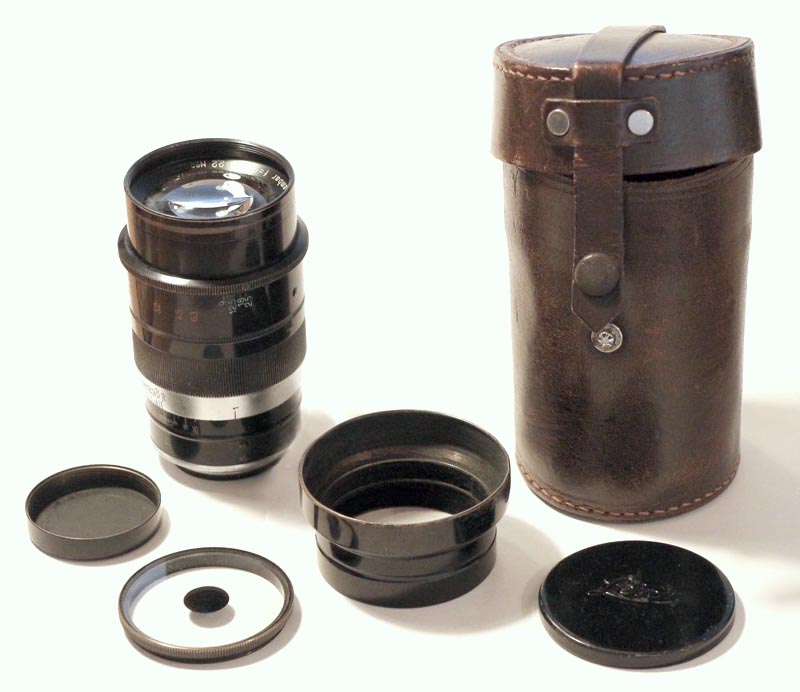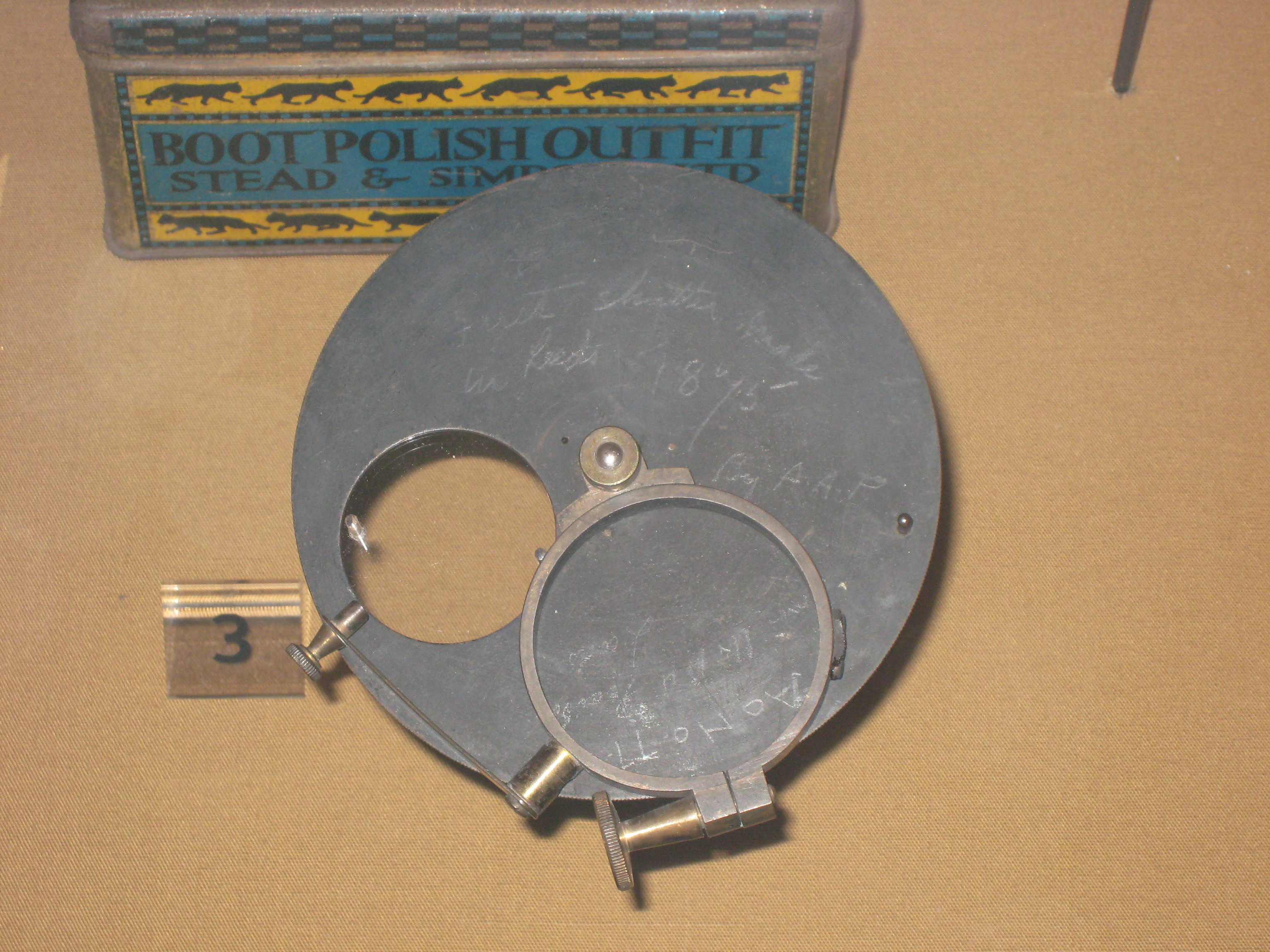|
Mamiya 645
The Mamiya 645 camera systems are a series of medium format film and digital cameras and lenses manufactured by Mamiya and its successors. They are called "645" because they use the nominal 6 cm x 4.5 cm film size from 120 roll film. They came in three major generations: first-generation manual-focus film cameras, second-generation manual-focus film cameras, and autofocus film/digital cameras. Mamiya 645 Manual Focus System Mamiya 645 manual focus cameras All seven of the manual-focus Mamiya 645 cameras can use the same lenses and film inserts (film spools). The two generations use different viewfinders, grips, and other accessories that are not always cross-compatible. First Generation * The M645 was manufactured from 1975 to 1987. This was the first model to offer a 6x4.5 cm frame, allowing 15 shots on a standard 120 roll film. The M645 was a true system camera, with interchangeable viewfinders and lenses. It used an electronically controlled cloth foc ... [...More Info...] [...Related Items...] OR: [Wikipedia] [Google] [Baidu] |
Camera
A camera is an Optics, optical instrument that can capture an image. Most cameras can capture 2D images, with some more advanced models being able to capture 3D images. At a basic level, most cameras consist of sealed boxes (the camera body), with a small hole (the aperture) that allows light to pass through in order to capture an image on a light-sensitive surface (usually a Image sensor, digital sensor or photographic film). Cameras have various mechanisms to control how the light falls onto the light-sensitive surface. Lenses focus the light entering the camera, and the aperture can be narrowed or widened. A Shutter (photography), shutter mechanism determines the amount of time the photosensitive surface is exposed to the light. The still image camera is the main instrument in the art of photography. Captured images may be reproduced later as part of the process of photography, digital imaging, or photographic printing. Similar artistic fields in the moving-image camera dom ... [...More Info...] [...Related Items...] OR: [Wikipedia] [Google] [Baidu] |
Nikon F-mount
The Nikon F-mount is a type of interchangeable lens mount developed by Nikon for its 35mm format single-lens reflex cameras. The F-mount was first introduced on the Nikon F camera in 1959, and features a three-lug bayonet mount with a 44mm throat and a Flange focal distance, flange to focal plane distance of 46.5mm. The company continues, with the 2020 D6 model, to use variations of the same lens mount specification for its film and digital single-lens reflex camera, digital SLR cameras. History The Nikon F-mount is one of only two SLR lens mounts (the other being the Pentax K-mount) which were not abandoned by their associated manufacturer upon the introduction of autofocus, but rather extended to meet new requirements related to light meter, metering, autofocus, and aperture control. The large variety of F-mount compatible lenses makes it the largest system of interchangeable flange-mount photographic lenses in history. Over 400 different Nikkor lenses are compatible with th ... [...More Info...] [...Related Items...] OR: [Wikipedia] [Google] [Baidu] |
Aperture
In optics, an aperture is a hole or an opening through which light travels. More specifically, the aperture and focal length of an optical system determine the cone angle of a bundle of rays that come to a focus in the image plane. An optical system typically has many openings or structures that limit the ray bundles (ray bundles are also known as ''pencils'' of light). These structures may be the edge of a lens or mirror, or a ring or other fixture that holds an optical element in place, or may be a special element such as a diaphragm placed in the optical path to limit the light admitted by the system. In general, these structures are called stops, and the aperture stop is the stop that primarily determines the ray cone angle and brightness at the image point. In some contexts, especially in photography and astronomy, ''aperture'' refers to the diameter of the aperture stop rather than the physical stop or the opening itself. For example, in a telescope, the aperture ... [...More Info...] [...Related Items...] OR: [Wikipedia] [Google] [Baidu] |
Focal Length
The focal length of an optical system is a measure of how strongly the system converges or diverges light; it is the inverse of the system's optical power. A positive focal length indicates that a system converges light, while a negative focal length indicates that the system diverges light. A system with a shorter focal length bends the rays more sharply, bringing them to a focus in a shorter distance or diverging them more quickly. For the special case of a thin lens in air, a positive focal length is the distance over which initially collimated (parallel) rays are brought to a focus, or alternatively a negative focal length indicates how far in front of the lens a point source must be located to form a collimated beam. For more general optical systems, the focal length has no intuitive meaning; it is simply the inverse of the system's optical power. In most photography and all telescopy, where the subject is essentially infinitely far away, longer focal length (lower opti ... [...More Info...] [...Related Items...] OR: [Wikipedia] [Google] [Baidu] |
Zoom Lens
A zoom lens is a mechanical assembly of lens elements for which the focal length (and thus angle of view) can be varied, as opposed to a fixed-focal-length (FFL) lens (see prime lens). A true zoom lens, also called a parfocal lens, is one that maintains focus when its focal length changes. Most consumer zoom lenses do not maintain perfect focus, but are still parfocal designs. Most camera phones that are advertised as having optical zoom actually use a few cameras of different but fixed focal length, combined with digital zoom to make a hybrid system. The convenience of variable focal length comes at the cost of complexity – and some compromises on image quality, weight, dimensions, aperture, autofocus performance, and cost. For example, all zoom lenses suffer from at least slight, if not considerable, loss of image resolution at their maximum aperture, especially at the extremes of their focal length range. This effect is evident in the corners of the image, when displa ... [...More Info...] [...Related Items...] OR: [Wikipedia] [Google] [Baidu] |
Low-dispersion Glass
Low-dispersion glass (LD glass) is a type of glass with a reduction in chromatic aberration (less rainbow effect). Crown glass is an example of a relatively inexpensive low-dispersion glass. ''Special low dispersion glass'' (SLD glass) and ''extraordinary low-dispersion glass'' (ELD glass) are glasses with yet lower dispersion (and yet higher price). Other glasses in this class are ''extra-low-dispersion glass'' (ED glass), and ''ultra-low-dispersion glass'' (UL glass). Application Low-dispersion glasses are particularly used to reduce chromatic aberration, most often used in achromatic doublets. The positive element is made of a low-dispersion glass, the negative element from a high-dispersion glass. To counteract the effect of the negative lens, the positive lens has to be thicker. Achromatic doublets therefore have higher thickness and weight than the equivalent non-chromatic-corrected single lenses. In comparison to telephoto lenses, shorter focal length objectives benefit les ... [...More Info...] [...Related Items...] OR: [Wikipedia] [Google] [Baidu] |
Soft Focus
In photography, soft focus is a lens flaw, in which the lens forms images that are blurred due to spherical aberration. A soft focus lens deliberately introduces spherical aberration in order to give the appearance of blurring the image while retaining sharp edges; it is not the same as an out-of-focus image, and the effect cannot be achieved simply by defocusing a sharp lens. Soft focus is also the name of the style of photograph produced by such a lens. Photography Because soft focus results from what are considered technical flaws, typically spherical and chromatic aberration, many older lenses had soft focus built in as a side effect of their construction. Some lens makers, such as Pinkham-Smith and Busch Nicola Perscheid (see Nicola Perscheid), intentionally designed lenses to take advantage of these flaws and, as color became available, chromatic aberration was less desirable, but well-managed spherical aberration was desirable. Newer lenses are optimized to minimize ... [...More Info...] [...Related Items...] OR: [Wikipedia] [Google] [Baidu] |
Shutter (photography)
In photography, a shutter is a device that allows light to pass for a determined period, exposing photographic film or a photosensitive digital sensor to light in order to capture a permanent image of a scene. A shutter can also be used to allow pulses of light to pass outwards, as seen in a movie projector or a signal lamp. A shutter of variable speed is used to control exposure time of the film. The shutter is constructed so that it automatically closes after a certain required time interval. The speed of the shutter is controlled by a ring outside the camera, on which various timings are marked. Camera shutter Camera shutters can be fitted in several positions: * Leaf shutters are usually fitted within a lens assembly (''central shutter''), or more rarely immediately behind (''behind-the-lens shutter'') or, even more rarely, in front of a lens, and shut off the beam of light where it is narrow. *Focal-plane shutters are mounted near the focal plane and move to uncover the fil ... [...More Info...] [...Related Items...] OR: [Wikipedia] [Google] [Baidu] |
Macro Photography
Macro photography (or photomacrography or macrography, and sometimes macrophotography) is extreme close-up photography, usually of very small subjects and living organisms like insects, in which the size of the subject in the photograph is greater than life size (though ''macrophotography'' also refers to the art of making very large photographs). By the original definition, a macro photograph is one in which the size of the subject on the negative or image sensor is life size or greater. In some senses, however, it refers to a finished photograph of a subject that is greater than life size. The ratio of the subject size on the film plane (or sensor plane) to the actual subject size is known as the reproduction ratio. Likewise, a macro lens is classically a lens capable of reproduction ratios of at least 1:1, although it often refers to any lens with a large reproduction ratio, despite rarely exceeding 1:1. Apart from technical photography and film-based processes, where the s ... [...More Info...] [...Related Items...] OR: [Wikipedia] [Google] [Baidu] |
Optical Coating
An optical coating is one or more thin layers of material deposited on an optical component such as a lens, prism or mirror, which alters the way in which the optic reflects and transmits light. These coatings have become a key technology in the field of optics. One type of optical coating is an anti-reflective coating, which reduces unwanted reflections from surfaces, and is commonly used on spectacle and camera lenses. Another type is the high-reflector coating, which can be used to produce mirrors that reflect greater than 99.99% of the light that falls on them. More complex optical coatings exhibit high reflection over some range of wavelengths, and anti-reflection over another range, allowing the production of dichroic thin-film filters. Types of coating The simplest optical coatings are thin layers of metals, such as aluminium, which are deposited on glass substrates to make mirror surfaces, a process known as silvering. The metal used determines the reflection charac ... [...More Info...] [...Related Items...] OR: [Wikipedia] [Google] [Baidu] |
Apochromat
An apochromat, or apochromatic lens (apo), is a photographic or other lens that has better correction of chromatic and spherical aberration than the much more common achromat lenses. Explanation Chromatic aberration is the phenomenon of different colors focusing at different distances from a lens. In photography, chromatic aberration produces soft overall images, and color fringing at high-contrast edges, like an edge between black and white. Astronomers face similar problems, particularly with telescopes that use lenses rather than mirrors. ''Achromatic'' lenses are corrected to bring ''two'' wavelengths into focus in the same plane – typically red (~0.590 µm) and blue (~0.495 µm). ''Apo''chromatic lenses are designed to bring ''three'' colors into focus in the same plane – typically red (~0.620 µm), green (~0.530 µm), and blue (~0.465 µm). The residual color error (secondary spectrum) can be up to an order of magnitude less than for an achro ... [...More Info...] [...Related Items...] OR: [Wikipedia] [Google] [Baidu] |
Prontor-Compur
A Prontor-Compur connection (also known as a PC connector, PC terminal, or PC socket) is a standard 3.5 mm (1/8") electrical connector (as defined in ISO 519 (1992-11-25). ''Photography -- Hand-held cameras -- Flash-connector dimensions''. Geneva: International Organization for Standardization. [...More Info...] [...Related Items...] OR: [Wikipedia] [Google] [Baidu] |








